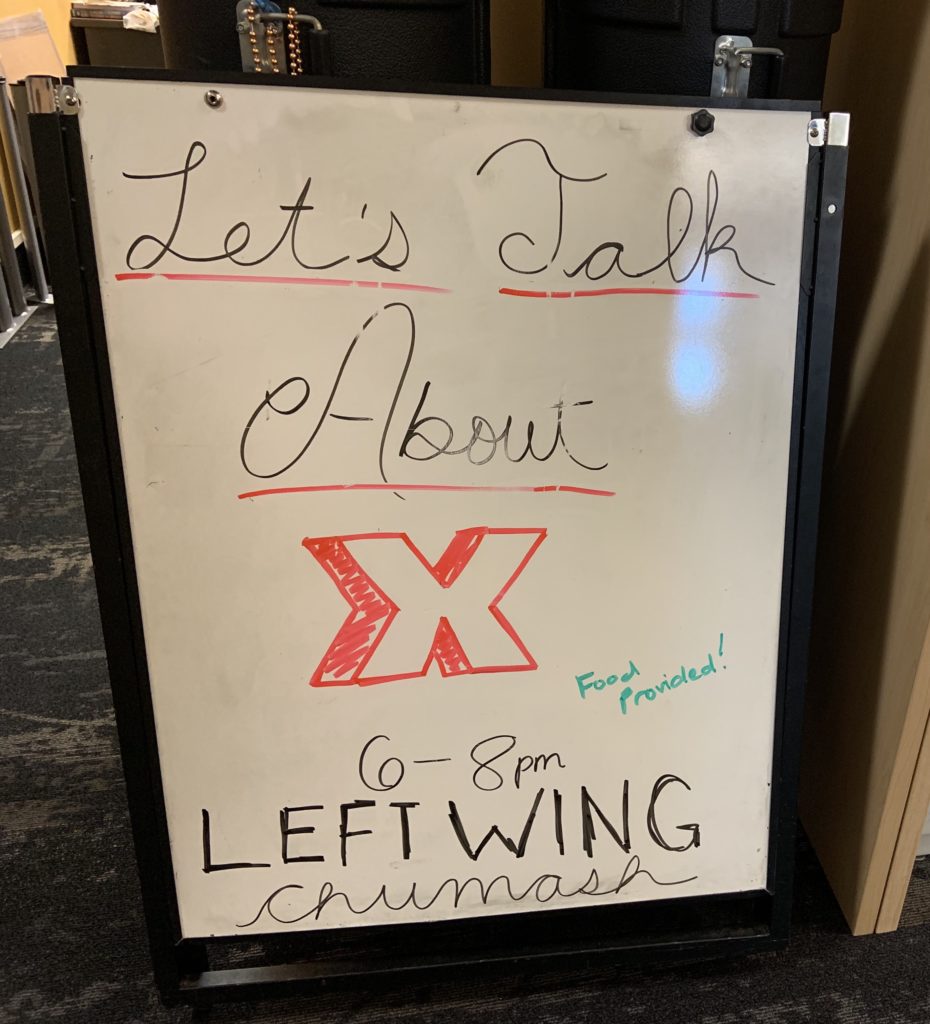For team two this week, our inspiration for our story stemmed from a Facebook event post that team member Tess Rossi, found online. The event detailed that it would facilitate a discussion surrounding gender expressive language and more specifically, a new emerging term – womxn.
“I found this story particularly interesting because I honestly did not know a lot about gender expansive language before this,” Tess Rossi said.
Out of all of the group members, none of use were actually versed on what the term meant nor the history behind it, so we were looking to learn as much as we could about the topic in order to present a great story. Therefore, our team took to the Gender Equity Center (who was putting on the event itself) to do some initial researching and interview any willing individuals. Our team meet Austine De Los Santos, a student assistant in the center and she gave us a synopsis of the history behind the term “woxmn” and the importance.
“The conversation around using the term “womxn” was started to be more inclusive of non-binary people, women of color, trans people and so on,” Austine De Los Santos said.
De Los Santos also shed light on the lack of understanding around the term, telling us how she has seen people mocking the “Lets Talk About X” posters, and asking how anyone would pronounce “womxn”.
 From there, our journey took to social media so that we could better comprehend the public’s understanding of this topic and the term “womxn”. The consensus from my research on Twitter, Facebook and Reddit, is that most people don’t understand the topic or haven’t come to a conclusion on how they feel about it.
From there, our journey took to social media so that we could better comprehend the public’s understanding of this topic and the term “womxn”. The consensus from my research on Twitter, Facebook and Reddit, is that most people don’t understand the topic or haven’t come to a conclusion on how they feel about it.
On Wednesday, May 29 Tess and Katie went to observe the “Lets Talk About X” event, still knowing very little about what it would entail and the importance of the term.
 “I have seen the word womxn but never knew the meaning behind it,” Stephanie Garibay said. “ So it was really interesting to see why it was being used.”
“I have seen the word womxn but never knew the meaning behind it,” Stephanie Garibay said. “ So it was really interesting to see why it was being used.”
The talk itself consisted of various individuals speaking on what the term itself meant, misconceptions about the term and even illustrated an example of backlash groups have received for using the term.

After the talk, the team took to speaking with some of the individuals who helped put on the event including De Los Santos and Katie Ettel a political science senior.
“It is something that stands in to represent a category of people who have been historically been left out of mainstream representations of what women is spelled with an ‘a’ or ‘e’,” Katie Ettel said. “Womxn is a gender expansive tool to be used by people to enforce, recognize, and celebrate people who have marginalized gender identities aligning with womanhood.”
On top of the event being very informative, our team learnt a lot from De Los Santos and Ettel, both of whom spoke at the event itself. It was great for our story and understanding of the topic, to get to dive further into the meaning behind “womxn” with them.
“It was really interesting to learn about how students at Cal Poly are trying to find more gender inclusive terminology,” Katie Hoyer said.